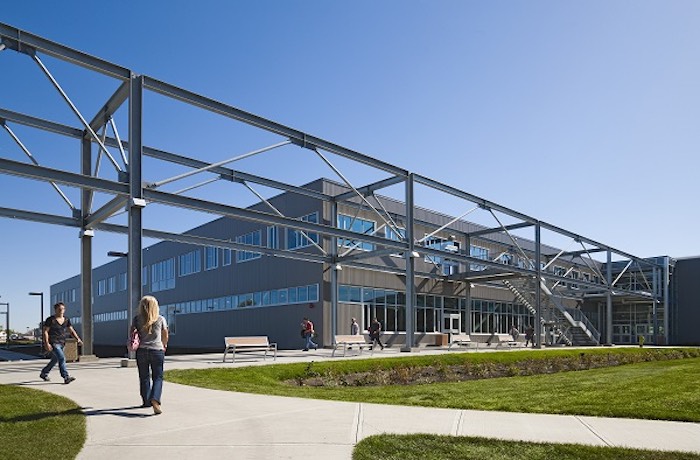Alberta
Province boosts apprenticeship programs adding room for more than 1,000 new students in Alberta

More apprenticeship spaces for Alberta students
Alberta is creating more than 1,000 new spaces for students in high-demand apprenticeship programs at post-secondary institutions.
Through Budget 2023, Alberta’s government is providing a funding boost of $15 million over three years to the Apprenticeship Learning Grants. With this increase, total funding for the grants will be $42 million in 2023-24.
The Apprenticeship Learning Grants are important for post-secondary institutions in Alberta that deliver classroom instruction to complement on-the-job training. New seats will be allocated to post-secondary institutions based on student demand and workforce data for in-demand skilled trades.
“This investment will help post-secondary institutions across Alberta create new spaces for students to build rewarding careers in the skilled trades. Strengthening our skilled labour force ensures that Alberta can respond to the needs of industry and the opportunities of our booming economy.”
“Apprenticeship education is an important part of our
post-secondary system. Making sure students have access to programs, training and resources not only sets them up for success but supports and grows industries and our economy with a world-class workforce.”
Alberta continues to diversify and grow, and as more people retire, the province is seeing an increased demand for skilled workers and apprenticeship learning opportunities. Student registration in Alberta’s apprenticeship programs increased to more than 15,600 in 2022 from 7,820 in 2020.
Each new seat created through this funding means more opportunities to connect students to
well-paying jobs while securing the talent Alberta needs to ensure the province remains competitive in a global economy.
“There is a growing need for skilled trade workers across Alberta. This announcement will provide support for new apprenticeships that will build Alberta’s economy.”
“Investment in post-secondary education is a key driver of Alberta’s economic prosperity. The expansion of apprenticeship seats ensures Red Deer Polytechnic can address the increased demand for skilled labour and trades training as Alberta industry and business continue to grow and prosper.”
“Alberta’s rebounding with opportunities for people in the skilled trades. I welcome this increase for post-secondaries to host classroom training for registered apprentices. For them, and especially for women in the trades, this financial support will change lives and keep Alberta growing.”
“Every new apprentice seat funded by this announcement supports a young Alberta family, builds community and strengthens the Alberta economy.”
Budget 2023 secures Alberta’s future by transforming the health-care system to meet people’s needs, supporting Albertans with the high cost of living, keeping our communities safe and driving the economy with more jobs, quality education and continued diversification.
Quick facts
- In the 2022-23 school year, 11 post-secondary institutions across Alberta are offering a combined total of about 22,000 seats in apprenticeship classroom instruction.
- The Government of Alberta offers apprenticeship education programs in 47 designated trades. Government administers and serves as the registrar, while post-secondary institutions deliver classroom instruction.
Alberta
Made in Alberta! Province makes it easier to support local products with Buy Local program

Show your Alberta side. Buy Local. |
When the going gets tough, Albertans stick together. That’s why Alberta’s government is launching a new campaign to benefit hard-working Albertans.
Global uncertainty is threatening the livelihoods of hard-working Alberta farmers, ranchers, processors and their families. The ‘Buy Local’ campaign, recently launched by Alberta’s government, encourages consumers to eat, drink and buy local to show our unified support for the province’s agriculture and food industry.
The government’s ‘Buy Local’ campaign encourages consumers to buy products from Alberta’s hard-working farmers, ranchers and food processors that produce safe, nutritious food for Albertans, Canadians and the world.
“It’s time to let these hard-working Albertans know we have their back. Now, more than ever, we need to shop local and buy made-in-Alberta products. The next time you are grocery shopping or go out for dinner or a drink with your friends or family, support local to demonstrate your Alberta pride. We are pleased tariffs don’t impact the ag industry right now and will keep advocating for our ag industry.”
Alberta’s government supports consumer choice. We are providing tools to help folks easily identify Alberta- and Canadian-made foods and products. Choosing local products keeps Albertans’ hard-earned dollars in our province. Whether it is farm-fresh vegetables, potatoes, honey, craft beer, frozen food or our world-renowned beef, Alberta has an abundance of fresh foods produced right on our doorstep.
Quick facts
- This summer, Albertans can support local at more than 150 farmers’ markets across the province and meet the folks who make, bake and grow our food.
- In March 2023, the Alberta government launched the ‘Made in Alberta’ voluntary food and beverage labelling program to support local agriculture and food sectors.
- Through direct connections with processors, the program has created the momentum to continue expanding consumer awareness about the ‘Made in Alberta’ label to help shoppers quickly identify foods and beverages produced in our province.
- Made in Alberta product catalogue website
Related information
Alberta
Province to expand services provided by Alberta Sheriffs: New policing option for municipalities

Expanding municipal police service options |
Proposed amendments would help ensure Alberta’s evolving public safety needs are met while also giving municipalities more options for local policing.
As first announced with the introduction of the Public Safety Statutes Amendment Act, 2024, Alberta’s government is considering creating a new independent agency police service to assume the police-like duties currently performed by Alberta Sheriffs. If passed, Bill 49 would lay additional groundwork for the new police service.
Proposed amendments to the Police Act recognize the unique challenges faced by different communities and seek to empower local governments to adopt strategies that effectively respond to their specific safety concerns, enhancing overall public safety across the province.
If passed, Bill 49 would specify that the new agency would be a Crown corporation with an independent board of directors to oversee its day-to-day operations. The new agency would be operationally independent from the government, consistent with all police services in Alberta. Unlike the Alberta Sheriffs, officers in the new police service would be directly employed by the police service rather than by the government.
“With this bill, we are taking the necessary steps to address the unique public safety concerns in communities across Alberta. As we work towards creating an independent agency police service, we are providing an essential component of Alberta’s police framework for years to come. Our aim is for the new agency is to ensure that Albertans are safe in their communities and receive the best possible service when they need it most.”
Additional amendments would allow municipalities to select the new agency as their local police service once it becomes fully operational and the necessary standards, capacity and frameworks are in place. Alberta’s government is committed to ensuring the new agency works collaboratively with all police services to meet the province’s evolving public safety needs and improve law enforcement response times, particularly in rural communities. While the RCMP would remain the official provincial police service, municipalities would have a new option for their local policing needs.
Once established, the agency would strengthen Alberta’s existing policing model and complement the province’s current police services, which include the RCMP, Indigenous police services and municipal police. It would help fill gaps and ensure law enforcement resources are deployed efficiently across the province.
Related information
-

 2025 Federal Election21 hours ago
2025 Federal Election21 hours agoOttawa Confirms China interfering with 2025 federal election: Beijing Seeks to Block Joe Tay’s Election
-

 Energy2 days ago
Energy2 days agoIndigenous-led Projects Hold Key To Canada’s Energy Future
-

 Energy2 days ago
Energy2 days agoMany Canadians—and many Albertans—live in energy poverty
-

 Business2 days ago
Business2 days agoCanada Urgently Needs A Watchdog For Government Waste
-

 2025 Federal Election21 hours ago
2025 Federal Election21 hours agoReal Homes vs. Modular Shoeboxes: The Housing Battle Between Poilievre and Carney
-

 2025 Federal Election21 hours ago
2025 Federal Election21 hours agoHow Canada’s Mainstream Media Lost the Public Trust
-

 International2 days ago
International2 days agoPope Francis has died aged 88
-

 2025 Federal Election10 hours ago
2025 Federal Election10 hours agoBREAKING: THE FEDERAL BRIEF THAT SHOULD SINK CARNEY


